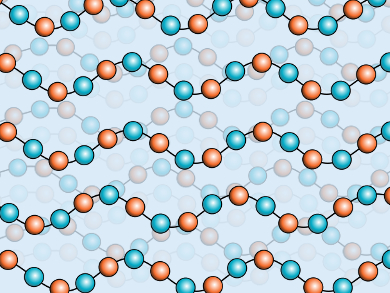Self-sorting processes occur frequently in nature. The formation of the double helix of DNA arises from the ability of its component nucleic acid bases to correctly self-assemble. There are artificial systems that exploit self-sorting behaviors by means of hydrogen bonding, π-π and host-guest interactions, to name a few. However, there are only a few examples of complex polymers made in this way.
Chuan-Feng Chen and colleagues, Chinese Academy of Sciences, Beijing, China, have developed a method to produce an alternating copolymer – a polymer in which two host building blocks, A and B, alternate systematically. Each host selectively recognizes two guest molecules (X or Y). Once X and Y are tethered, a linear alternating polymer … AX–YBY–XA … results. The building blocks use crown-ether derivatives and the hosts dibenzylammonium and (9-anthracylmethyl)-benzylammonium moieties for recognition. Mixing all of the components led directly to the alternating copolymer.
At high concentrations fibers could be drawn from the viscous copolymer product and analyzed. These fibers, which are made up from entangled chains, were found to have a regular diameter of 11 μm.
- Self-sorting behavior of four-component host-guest system and its incorporation into a linear supramolecular alternating copolymer,
Fei Zeng, Ying Han, Chuan-Feng Chen,
Chem. Commun. 2015.
DOI: 10.1039/C5CC00035A




